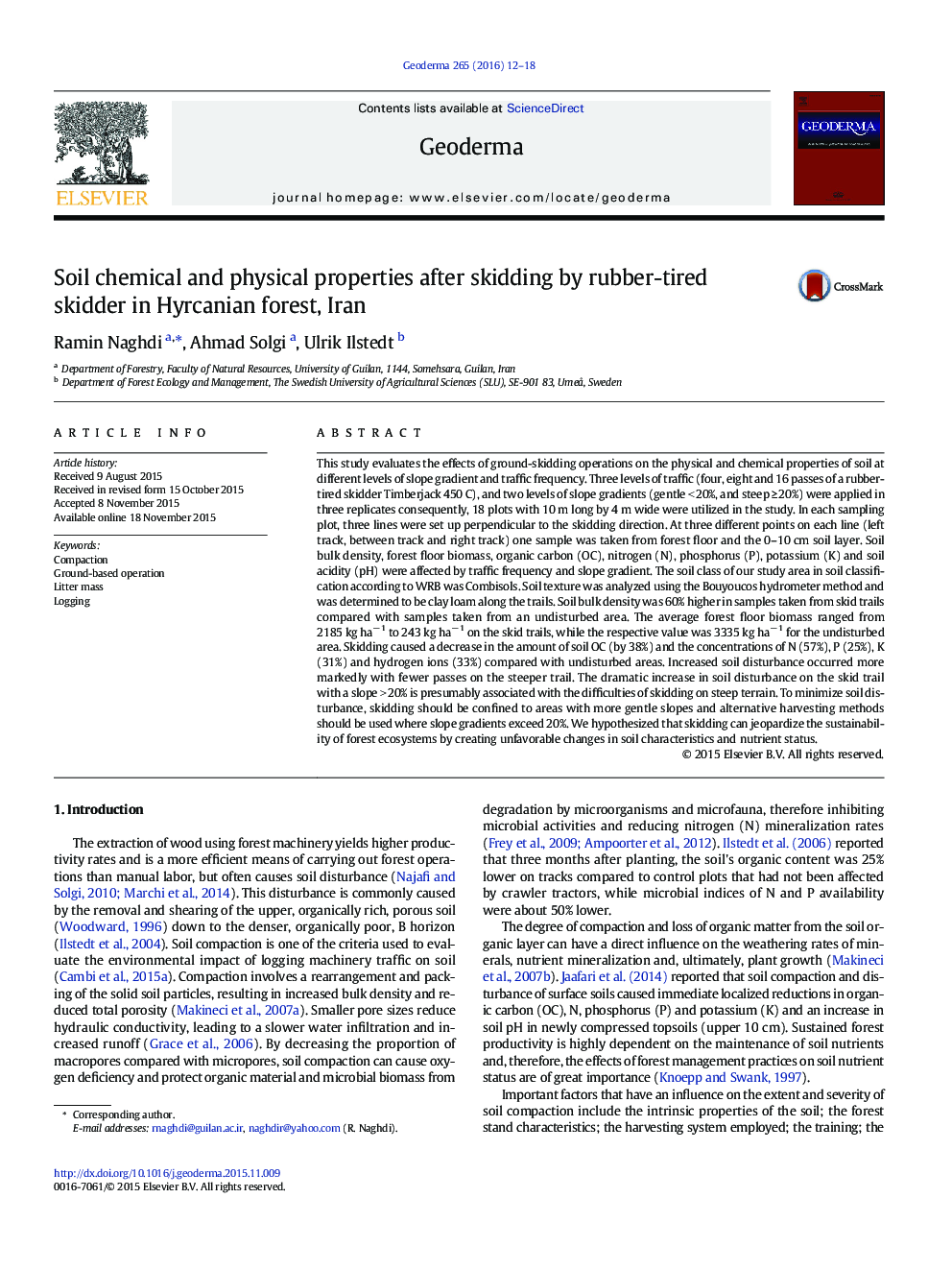| کد مقاله | کد نشریه | سال انتشار | مقاله انگلیسی | نسخه تمام متن |
|---|---|---|---|---|
| 6408419 | 1629452 | 2016 | 7 صفحه PDF | دانلود رایگان |
- Traffic frequency and slope gradients had effect on soil disturbance.
- Soil bulk density was 60% higher in skid trails compared with undisturbed area.
- Skidding caused a decrease in the amount of soil OC and the concentrations of N, P, K and hydrogen ions.
- Changes in soil chemical properties were much more pronounced on steeper slopes.
This study evaluates the effects of ground-skidding operations on the physical and chemical properties of soil at different levels of slope gradient and traffic frequency. Three levels of traffic (four, eight and 16 passes of a rubber-tired skidder Timberjack 450 C), and two levels of slope gradients (gentle < 20%, and steep â¥Â 20%) were applied in three replicates consequently, 18 plots with 10 m long by 4 m wide were utilized in the study. In each sampling plot, three lines were set up perpendicular to the skidding direction. At three different points on each line (left track, between track and right track) one sample was taken from forest floor and the 0-10 cm soil layer. Soil bulk density, forest floor biomass, organic carbon (OC), nitrogen (N), phosphorus (P), potassium (K) and soil acidity (pH) were affected by traffic frequency and slope gradient. The soil class of our study area in soil classification according to WRB was Combisols. Soil texture was analyzed using the Bouyoucos hydrometer method and was determined to be clay loam along the trails. Soil bulk density was 60% higher in samples taken from skid trails compared with samples taken from an undisturbed area. The average forest floor biomass ranged from 2185 kg haâ 1 to 243 kg haâ 1 on the skid trails, while the respective value was 3335 kg haâ 1 for the undisturbed area. Skidding caused a decrease in the amount of soil OC (by 38%) and the concentrations of N (57%), P (25%), K (31%) and hydrogen ions (33%) compared with undisturbed areas. Increased soil disturbance occurred more markedly with fewer passes on the steeper trail. The dramatic increase in soil disturbance on the skid trail with a slope > 20% is presumably associated with the difficulties of skidding on steep terrain. To minimize soil disturbance, skidding should be confined to areas with more gentle slopes and alternative harvesting methods should be used where slope gradients exceed 20%. We hypothesized that skidding can jeopardize the sustainability of forest ecosystems by creating unfavorable changes in soil characteristics and nutrient status.
Journal: Geoderma - Volume 265, 1 March 2016, Pages 12-18
